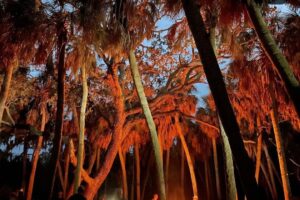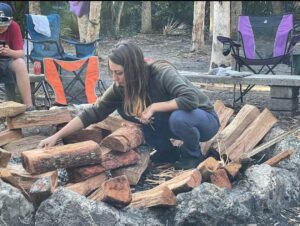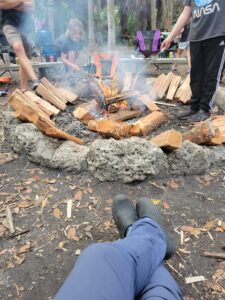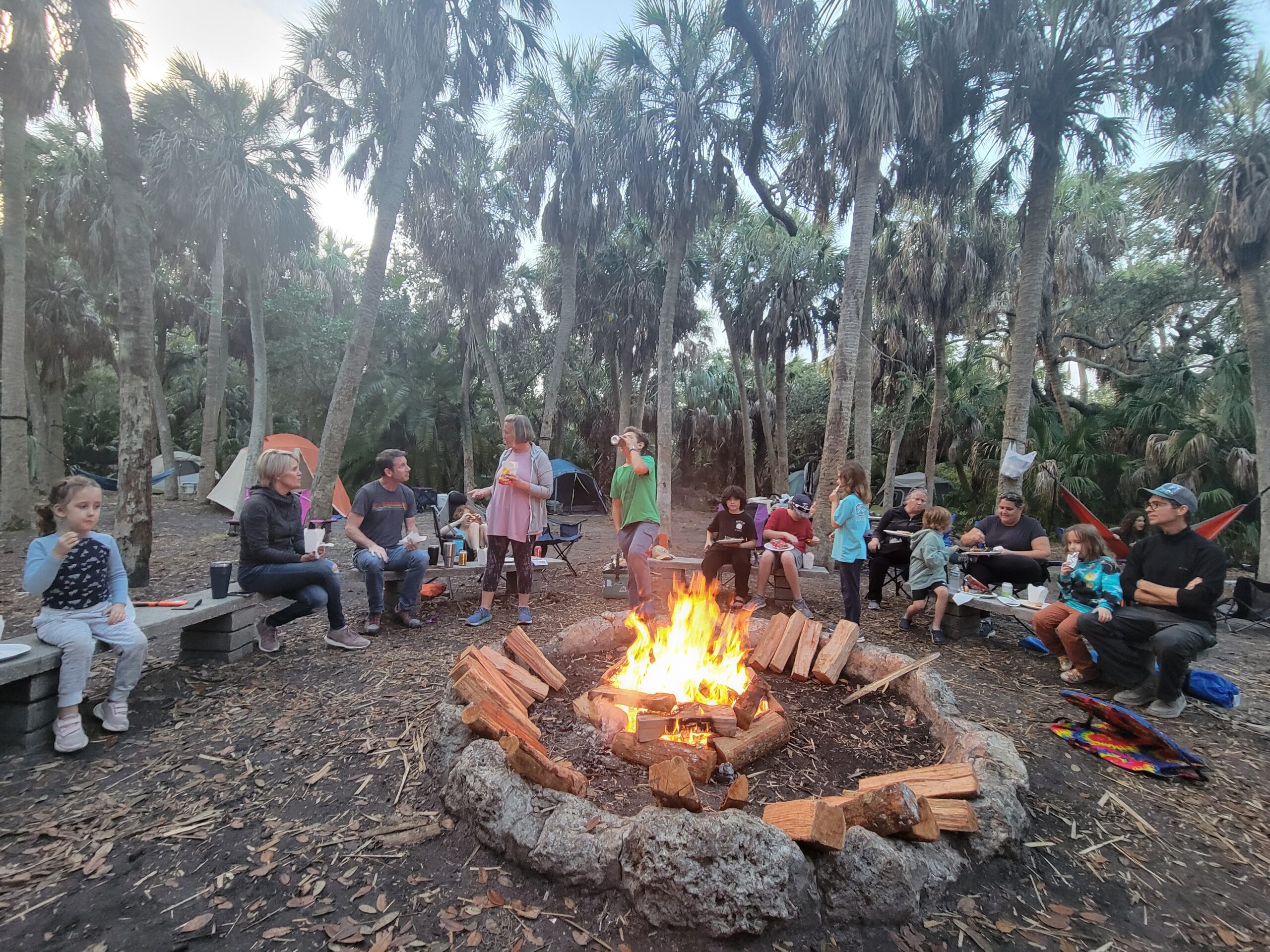The annual school camping trip is something that I look forward to every year. It is no secret that I love to build a good fire, and the October camping trip provides the first opportunity for a below 80 Florida evening to share my hard work with friends and family. During the multi-day trip, I am most likely to be found collecting kindling with kids, poking and rearranging coals, or standing in the warm glory of our creation. The best part of the fire building at our annual camping trip is that it I get to serve my community with light and warmth, and I get to teach one of my favorite outdoor living skills to students (and their dads).

First, the stick hunt. There is something about camping that brings out the primal (even feral) instincts from most people, but kids especially. Even the kids that typically don’t like dirt or bugs or the outdoors are almost immediately willing to wander through the woods in search of some good sticks for a fire. I share with the kids what sizes and thicknesses we are looking for, and the kids share their previous knowledge of what types of materials are ideal for getting the fire started. Despite this group discussion, there is always one or two whole tree branches that make their way to our campground. No problem, the huge log provides the perfect example for comparison of sizes, explanation about why each size of fuel is useful, and a quick review of the leave no trace principals!
Once we’ve got the tinder and kindling, then I start to organize the shapes we need. This is when the children typically disperse for snacks, bug hunting, water play, tag, or sword fighting with the sticks we decide not to use. Not every moment has to be a lesson, I remind myself, and our camping trip is about bonding, Ms. Shand, not a structured lesson on the science of fire building! There’s inevitably one or two students that like to watch my meticulous arrangement of sticks, and a parent or two that peek over and comment “ah, I see you’re using the teepee structure,” an outdoorsy dad may say, or “I’ve got some lighter fluid if you want to skip all that!” but I just laugh and continue building The Greatest Fire stick by stick.

Finally, it is time to light this bad boy. Now, the Science of Fire Building lesson might use a more interesting method to generate the spark that would build into a full flame, but this is for fun, so out comes the lighter. If I don’t have an audience (because I’ve been placing small sticks in a triangle for 20 minutes), I like to call some students over to help make sure the fire can get to a sustainable size before going out. We quickly talk through the oxygen, fuel, and spark requirements, and I ask the kids to tell me what the fire needs more of as we get through the initial stage of early-fire. Once it’s lit and crackling, we step back and enjoy.
I have a hard time keeping my hands out of the fire. Like every human before me, I love to watch the flames consume the wood and the embers undulate as the air passes through the base. I become hypnotized just like everyone else, but the perfectionist in me also gets distracted by the ways in which the fire could be bigger, brighter, hotter, or more efficient as time passes. I keep poking and adding to the fire for hours, and when a child follows suit, we talk about how to interact with the fire safely. Parents chime in about the structures they like to use when they’re camping, and the kids like to experiment with the different fuels they can find and what sort of effect it might have.

This is experiential education at its best – teachers, family, and friends share in an activity together where we can discuss, build, experiment, and enjoy the flame of our collective labor. The fireside is my favorite place to connect with the community because we can share stories and music and silence and all of it flows so easily and naturally. The camping trip certainly isn’t the place of structured lesson plans like the classroom might be, but there is so much to learn and share when we’re gathered around the fire.


